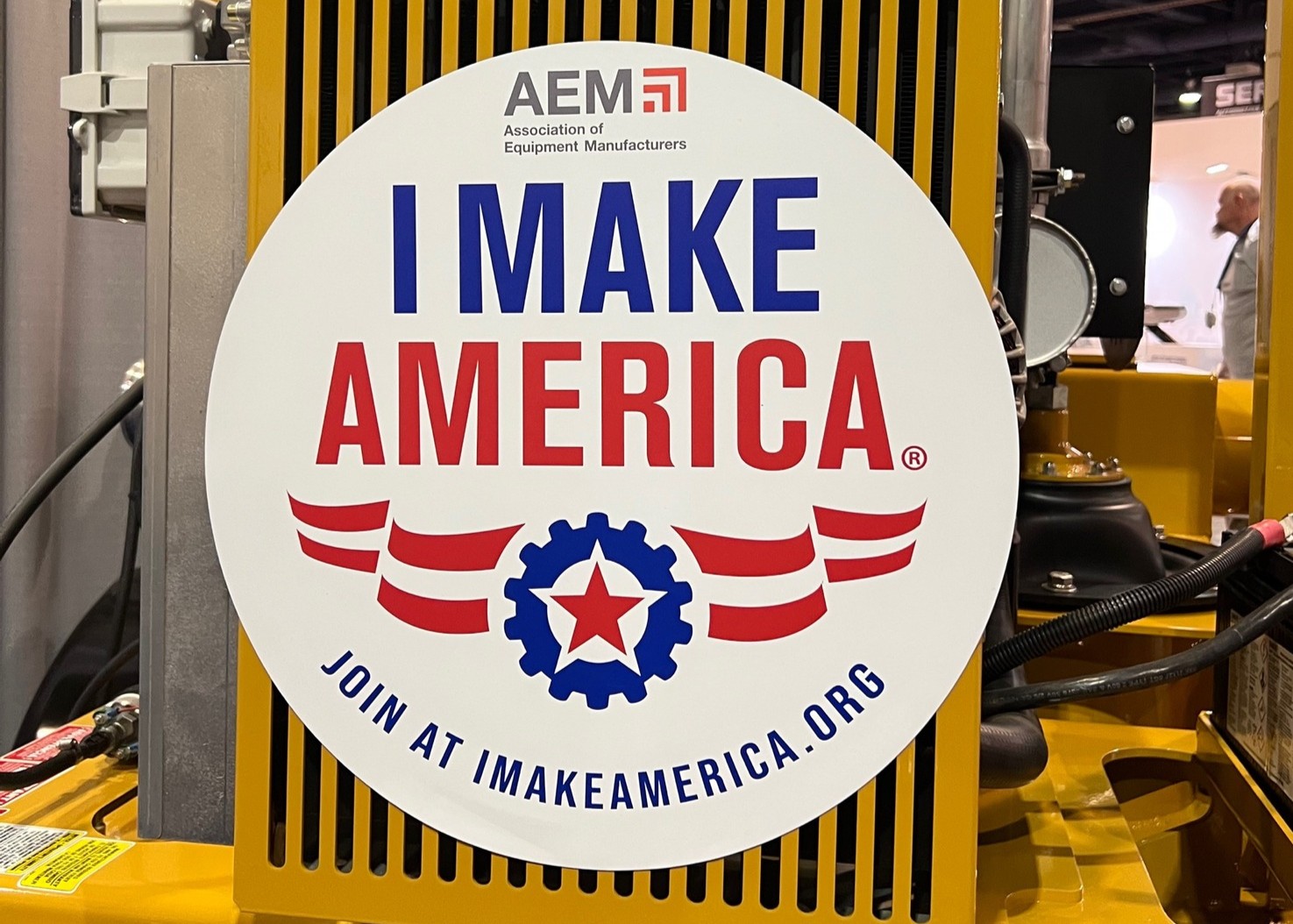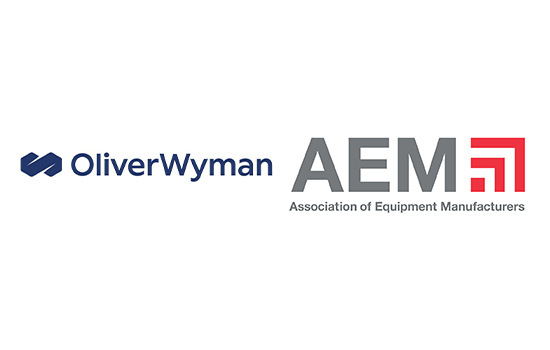The migration toward battery-electric vehicles is happening at a much faster pace for on-highway vehicles than non-road machinery. In fact, all indications are that the internal combustion engine is here to stay for off-road equipment, at least through the 2040-2050 timeframe.
That’s according to Alex Woodrow, managing director at KGP Powertrain Intelligence. Woodrow was the featured presenter during last month’s AEM Member Education Webinar on engine emissions. He stressed the importance of understanding what the global emissions regulatory landscape looks like moving forward, given the off-road industry’s ongoing utilization of ICE powertrains.
“Broadly speaking, things are a little slow at the moment,” Woodrow pointed out. “Aside from India, there are no major regulation changes coming into the market right now.”
That said, there is quite a bit of activity on the three- to five-year horizon. One interesting case to monitor is right here in the United States. If it becomes law in its current proposed state, CARB Tier 5 will leapfrog Europe’s EU Stage V as the most stringent emissions regulation in the world. A lot of uncertainty exists concerning CARB Tier 5, though, and what ultimately becomes law remains to be seen.
In the meantime, the following is a summary of key regulatory activity across the globe that Woodrow presented during the webinar:
U.S. and Canada
No changes to non-road regulations are expected to happen over the next two years. Looking ahead, as mentioned, all eyes are on CARB Tier 5 and potential new NOx and PM requirements. CARB needs U.S. EPA support, however, to regulate ag and construction equipment under 175 hp. The current U.S. political complexity at the federal level is further fueling uncertainty over CARB Tier 5.
“Prior to the current administration taking office, we were considering that EPA would follow CARB, or that there would be some joint agreement between the two,” Woodrow said. “That seems more uncertain now. There is now the potential that CARB’s Tier 5 may not come in until 2029-2032. There is further uncertainty with that, i.e. will it be phased, will there be an interim, etc. There are many different options on the table.”
Even without the politically driven uncertainty, Woodrow said CARB Tier 5 is inherently complex. For starters, EPA preemption would limit most applications to 130-560 kW machines. But then, limits on criteria pollutants (NOx, PM, NHHC, and CO) could become more stringent than EU Stage V standards, requiring a significant change in aftertreatment and engine strategy from manufacturers. For example, one solution would be a twin-SCR system similar to what’s being done by some on-highway truck OEMs.
Other proposed changes to CARB Tier 5 include DAAAC (diesel aftertreatment accelerated aging cycle), inducements to ensure the SCR is working correctly, extended useful life and warranty period, enhanced defects reporting, LLC (low load cycle) testing similar to what’s already used for on-highway trucks, idle reduction provisions, and several options for a phased-in approach.
Woodrow expects final rulemaking to conclude over the next 12-18 months after some additional robust debate. As a final note, he said CARB is considering EU Stage V engines as an option for Tier 5 Interim compliance.
AEM’s Safety & Product Leadership Team works to help grow members’ market access through safety, sustainability, and shared solutions. Learn more.
China
The world’s largest producer of non-road mobile machinery began implementing CN Stage IV in 2024. It’s equivalent to EPA Tier 4 Interim and EU Stage IIIB, but it also includes a PN number which necessitates the inclusion of a DPF for all engines above 37 kW. Looking ahead, Woodrow said China is expecting to draft something equivalent to EU Stage V, but that won’t be implemented until 2026 or 2027.
Europe
“The vast majority of machines are now Stage V,” Woodrow pointed out. That regulation is similar to EPA Tier 4 Final, along with a few additions such as a PN number and some in-service monitoring requirements (ISM). Looking ahead, Woodrow anticipates additional regulations pertaining to spark-ignition engines, a potential ultra-low NOx limit, and potential CO2 legislation. He also expects to see an EU Stage VI regulation in the 2030-2032 timeframe.
India
A significant change has taken place in India with Bharat Stage V, which is equivalent to EU Stage IV for all engines above 37 kW. The interesting thing, Woodrow pointed out, is that only 25% of machines in India fall into this category, as the overwhelming majority are smaller tractors. At the same time, the Indian government has been incentivizing electric tractor adoption through a program called FAME III, which can help farmers offset up to 40% of the total cost of a new electric tractor.
At the present time, EU Stage V-equivalent legislation is being introduced this year and next. Timing has been an issue, though, due to a six-month phase-in of existing machines. “For tractors, which is the majority of the market, it’s looking like April 2026,” Woodrow said. “That could be delayed a bit by the current political situation in India, along with another six-month phase-in period.”
Japan
No major changes are expected over the next couple of years. “Japan has already had a regulation that’s EU Stage IV-equivalent since 2015,” Woodrow said. Looking ahead, something equivalent to EU Stage V is a possibility, but remains uncertain. In any event, some engine and equipment manufacturers already have Stage V technology available for European export. Japan is also looking to add a PN number to its current standard.
South Korea
The existing regulation is already aligned with EU Stage V. No further developments are on the horizon, according to Woodrow.
Brazil
Brazil has what’s known as MAR-1, which is equivalent to EU Stage IIIA. It was introduced through a staggered approach from 2015-2019. “Now they’ve just begun talking about MAR-2,” Woodrow said. “This may actually skip EU Stage IIIB and go right to something equivalent with EPA Tier 4 Final or EU Stage V sometime post-2028.”
AEM’s Engine Emissions Technical Committee (EETC) provides a forum for discussing the legal, regulatory, and compliance issues surrounding engines and engine emissions. Volunteer with AEM.
The Future of Fuels
As the path toward reduced emissions and decarbonization intensifies over the next decade and beyond, the utilization of various alternative fuels is expected to become more prevalent. Which fuels end up being leveraged will be on a case-by-case basis.
“Many fuels will offer improvement over the next decade, but availability, cost, and distribution remain as challenges,” Woodrow cautioned.
Future energy sources for off-road equipment will include EV. Incentive programs will help drive adoption, as we’re already seeing in India with FAME III, as well as in California with CARB’s CORE (clean off-road equipment) vouchers, PACE (phased advanced clean equipment regulation), and SORE (small off-road engines) initiatives. Policy in China has also driven electric sales in some segments, though electric remains a small share of the overall number of machines produced there. Policy and financial levers are also being worked in Japan, Brazil, Chile, and elsewhere.
In addition to EV, other future energy sources are likely to include hydrogen, renewable diesel, fuel cell, natural and renewable natural gas, and hybrids (48V/400V). Woodrow said drivers for mid-term adoption of these fuel types will be corporate CSR and ESG goals, local air quality standards, advantages with respect to total cost of ownership, and other financial incentives.
Fossil diesel will also continue to be a prevalent fuel source for off-road equipment. However, bio-diesel blends could assume a more prominent role in some markets. Woodrow said bio-blends of 30-40%, if not 100%, are being looked into. That could create issues with looming aftertreatment system durability targets, however, which could spur additional interest in renewable diesel which is a drop-in replacement for fossil diesel.
Spark-ignition legislation is also something to keep an eye on. Alternative fuels like natural gas, renewable natural gas, ethanol and methanol require a spark-ignition engine. Specific legislation with different requirements and potentially different criteria limits could be on the horizon.
The global emissions regulatory landscape is definitely growing more complex. A lack of harmonization makes compliance even more burdensome. But it is a burden OEMs will continue to shoulder—in 2025 and beyond.
About AEM Member Education Webinars
AEM members have exclusive access to help them stay on top of emerging issues and trends via member education webinars. Experts break down industry issues and pinpoint critical changes in the landscape to help attendees refine their company’s strategy.
For more information on the upcoming series of member education webinars, contact your Account Success Advisor.





